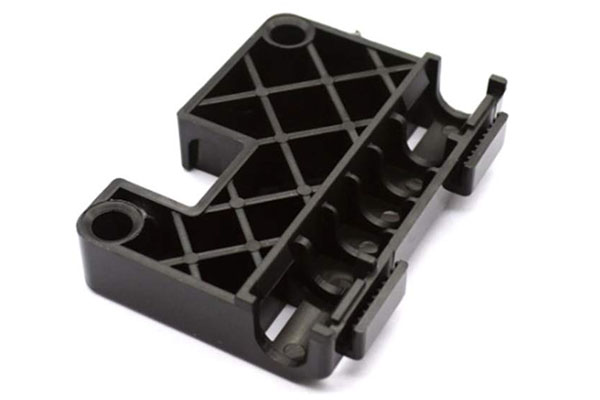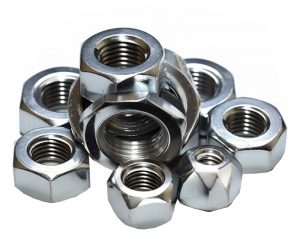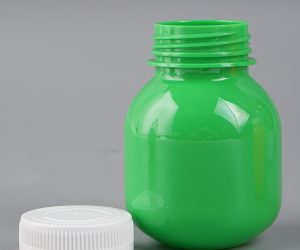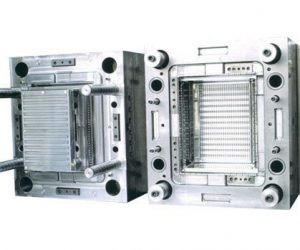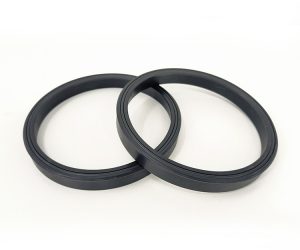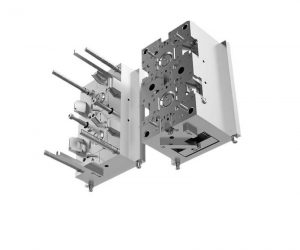Introduction
Injection molding is a cornerstone of modern manufacturing, playing a pivotal role in producing a vast array of products that surround us in our daily lives. From the tiny components within our electronic devices to the large parts in automotive manufacturing, injection molding's versatility and efficiency are unrivaled. This manufacturing process involves injecting molten material, typically plastic, into a mold cavity where it cools and solidifies into the desired shape.
The importance of injection molding in the manufacturing industry cannot be overstated. It enables high - volume production with consistent quality, making it an ideal choice for mass - produced goods. For example, in the consumer electronics sector, the cases for smartphones, tablets, and laptops are often produced through injection molding. This allows for the creation of complex shapes with high precision, meeting the aesthetic and functional requirements of modern devices. In the automotive industry, injection - molded parts such as bumpers, interior components, and even engine parts contribute to the overall design, safety, and performance of vehicles.
However, when it comes to injection molding, one question that constantly looms large for manufacturers, entrepreneurs, and product developers is: How much does injection molding cost? The cost of injection molding is a crucial factor that can significantly impact the feasibility and profitability of a product. Whether you're a startup looking to bring a new product to market or an established company considering product redesign or expansion, understanding injection molding costs is essential. It can help you make informed decisions about material selection, production volume, and overall project budgeting. In the following sections, we will delve deep into the various factors that influence injection molding costs, providing you with a comprehensive guide to help you navigate this complex but vital aspect of the manufacturing process.
Factors Affecting Injection Molding Cost
1. Material Costs
The cost of materials used in injection molding can vary significantly. Different plastic materials have different price ranges. For instance, ABS (Acrylonitrile Butadiene Styrene) is a commonly used plastic in injection molding. It generally ranges from \(1.5 to \)3 per pound. ABS is popular due to its good impact resistance, dimensional stability, and ease of processing. It is often used in consumer electronics, automotive interiors, and toys.
On the other hand, PP (Polypropylene) is another widely - used material. Its price typically ranges from \(1 to \)2 per pound. PP is known for its excellent chemical resistance, high fatigue strength, and relatively low density. It is commonly found in applications such as food packaging, automotive parts like bumpers, and household appliances.
Several factors influence material costs. The raw material's base price, which is affected by global supply and demand, plays a major role. For example, if there is a shortage of a particular monomer used in plastic production, the price of the resulting plastic material will increase. Additionally, additives added to the base plastic to enhance properties like flame retardancy, UV resistance, or color can also drive up the cost.
2. Mold Design and Tooling
The complexity of mold design has a direct impact on injection molding costs. A simple mold, such as one for a basic rectangular plastic container, may cost anywhere from \(5,000 to \)20,000. These molds have straightforward geometries, with few or no complex features like undercuts or intricate cavities.
In contrast, a complex mold, for example, one for a smartphone case with multiple buttons, precise cut - outs, and internal structures, can cost upwards of $50,000 or even more. Complex molds often require advanced manufacturing techniques like wire EDM (Electrical Discharge Machining) to create intricate details accurately.
The choice of mold material also affects cost. Steel molds are more durable and can withstand high - volume production but are more expensive, costing around \(20 - \)50 per pound depending on the type of steel. Aluminum molds, on the other hand, are lighter and less expensive, usually around \(5 - \)15 per pound, but they may not be as long - lasting as steel molds and are more suitable for lower - volume production runs.
3. Part Complexity
The complexity of the part being molded significantly increases production costs. Complex parts often require additional features in the mold, such as slides, lifters, or multiple core - pulling mechanisms. These extra components in the mold not only increase the mold - making cost but also the complexity of the injection molding process.
For example, a simple plastic cube with no special features has a relatively low production cost. However, a part with internal channels, thin walls, and multiple undercuts will be much more expensive to produce. The following chart shows a rough comparison of the cost difference between a simple and a complex part:
| Part Type | Estimated Cost per Unit (Low - Volume Production) |
| Simple Part | \(0.5 - \)1 |
| Complex Part | \(2 - \)5 |
4. Production Volume
There is an inverse relationship between production volume and the cost per unit in injection molding. For low - volume production runs, say 1,000 - 5,000 units, the cost per unit is relatively high. This is because the upfront costs of mold design, tooling, and machine setup are spread over a small number of parts. For example, if the mold cost is \(20,000 and you produce 1,000 units, the mold cost per unit is \)20.
However, as the production volume increases, the cost per unit decreases significantly. In large - scale production, such as 100,000 - 1,000,000 units, the fixed costs are spread over a much larger number of parts. Using the same \(20,000 mold cost, if you produce 100,000 units, the mold cost per unit drops to \)0.2. This is why injection molding is highly cost - effective for mass - produced products.
5. Equipment and Machinery
The cost of injection molding machines can vary widely. Small, low - capacity injection molding machines suitable for small - scale production or prototyping may cost around \(10,000 - \)50,000. These machines have lower clamping forces and injection volumes.
Larger, high - capacity machines used for large - scale industrial production can cost upwards of $100,000, with some advanced models reaching several hundred thousand dollars. These high - end machines offer higher precision, faster cycle times, and the ability to handle larger and more complex molds.
Equipment maintenance and energy consumption also contribute to the overall cost. Regular maintenance, including replacing worn - out parts, lubricating moving components, and calibrating sensors, is essential to keep the machine running smoothly. Energy consumption can be a significant ongoing cost, especially for high - power machines running continuously. For example, a large injection molding machine might consume several kilowatts of electricity per hour, adding up over time.
6. Labor Costs
Labor costs play a significant role in injection molding. The tasks involved, such as machine operation, mold setup, quality control, and part removal, all require skilled labor. In developed countries like the United States, the average hourly wage for an injection molding machine operator can range from \(15 - \)30, depending on the region and level of experience. In contrast, in some developing countries in Asia, the hourly wage for a similar position might be \(2 - \)8.
The proportion of labor cost in the overall injection molding cost can range from 20% - 40%, depending on factors like the level of automation in the production process. In highly automated factories with advanced robotics and computer - controlled systems, labor costs are relatively lower as fewer human operators are required. However, in less automated setups, labor costs can be a more substantial portion of the total cost.
Cost Calculation Examples
1. Simple Part Example
Let's consider a simple plastic part, such as a small, basic plastic container with a volume of 100 cubic centimeters.
Material Cost:
We choose PP (Polypropylene) as the material, which costs \(1.5 per pound. The density of PP is approximately 0.9 g/cm³. The weight of the part is calculated as follows: \)100 \text{ cm}^3\times0.9\text{ g/cm}^3 = 90\text{ g}\(. Since 1 pound = 453.592 g, the weight in pounds is \)90\div453.592\approx0.2\(pounds. So the material cost per part is\)0.2\times1.5 = \(0.3\).
Mold Cost:
The mold for this simple part is relatively inexpensive, costing around \(10,000. If we plan to produce 10,000 units, the mold cost per unit is \)10000\div10000 = \(1\).
Machine and Labor Cost:
Assume the injection molding machine has an hourly cost of \(50, including energy and maintenance. The cycle time for this simple part is 30 seconds. In one hour (3600 seconds), the machine can produce \)3600\div30 = 120\(parts. So the machine cost per part is\)50\div120\approx\(0.42\). Labor cost is estimated at $0.3 per part.
The total cost per part for this simple plastic container is approximately \(0.3 + 1+0.42 + 0.3 = \)2.02$.
2. Complex Part Example
Now, let's take a complex part, like a high - end smartphone case with multiple buttons, precise cut - outs, and internal structures.
Material Cost:
We use PC (Polycarbonate) which costs \(2.5 per pound. The volume of the smartphone case is 200 cubic centimeters. The density of PC is about 1.2 g/cm³. The weight of the part is \)200\text{ cm}^3\times1.2\text{ g/cm}^3 = 240\text{ g}\(. In pounds, it is \)240\div453.592\approx0.53\(pounds. So the material cost per part is\)0.53\times2.5 = \(1.325\).
Mold Cost:
The mold for this complex part is much more expensive, say \(80,000. If we produce 50,000 units, the mold cost per unit is \)80000\div50000 = \(1.6\).
Machine and Labor Cost:
The cycle time for this complex part is 60 seconds due to the need for more precise injection and longer cooling time. The machine hourly cost is still \(50. In one hour, the machine can produce \)3600\div60 = 60\(parts. So the machine cost per part is\)50\div60\approx\(0.83. Labor cost, which is more for handling the complex operations, is \)0.5 per part.
The complex part also requires additional post - processing such as polishing and deburring, which adds $0.5 per part.
The total cost per part for this complex smartphone case is approximately \(1.325+1.6 + 0.83+0.5+0.5 = \)4.755$.
The complex part is more expensive mainly because of the higher - cost mold, longer cycle time, more complex material handling, and additional post - processing requirements.
Yigu Technology's Perspective
As a non - standard plastic metal products custom supplier, Yigu Technology deeply understands the significance of cost - effective injection molding. We believe that in - depth material research is the foundation for cost - control. By continuously exploring new materials and their applications, we can find more suitable and cost - effective options for our clients. For example, when a client needed a part with high - strength and heat - resistance requirements, instead of immediately choosing a high - cost engineering plastic, we spent time researching and testing, and finally found a modified version of a more common plastic that met the performance requirements at a much lower cost.
Moreover, we focus on optimizing the mold design process. Our experienced engineers use advanced CAD/CAM technology to simulate and analyze the mold design before production. This not only reduces the possibility of mold failures during production but also helps to shorten the production cycle. For instance, in a project for a complex - shaped automotive part, through detailed simulation, we were able to simplify the mold structure while maintaining the part's quality, reducing the mold - making cost by 20%. Additionally, we implement lean manufacturing principles in our production process. By streamlining workflows, reducing waste, and improving production efficiency, we can effectively lower the overall injection molding cost without sacrificing quality.
FAQ
1. How can I accurately estimate the injection molding cost for my project?
To accurately estimate injection molding costs, consider all the factors mentioned above. First, determine the material you'll use and research its current market price. Next, assess the complexity of your part design. A simple part will have a lower mold cost compared to a complex one. Calculate the production volume you anticipate; the higher the volume, the lower the per - unit cost. Also, factor in equipment costs, which can vary based on the size and capabilities of the injection molding machine required. Labor costs depend on your location and the level of automation in your production process. You can get a more accurate estimate by consulting with injection molding suppliers. They can provide quotes based on your specific part design, material choice, and production volume requirements.
2. What are the most cost - effective materials for injection molding?
Some cost - effective materials for injection molding include PP (Polypropylene) and HDPE (High - Density Polyethylene). PP, with a price range of \(1 - \)2 per pound, is great for applications like food packaging, automotive parts, and household appliances due to its chemical resistance, high fatigue strength, and low density. HDPE, which usually costs around \(1 - \)1.5 per pound, is known for its toughness, chemical resistance, and good impact strength. It is commonly used in products such as plastic bottles, pipes, and toys. Another option is LDPE (Low - Density Polyethylene), costing approximately \(1.2 - \)2 per pound. LDPE is flexible and has good transparency, making it suitable for applications like plastic bags and film - based products.
3. How does the production volume impact the injection molding cost?
There is an inverse relationship between production volume and injection molding cost per unit. The upfront costs of mold design, tooling, and machine setup are fixed. For low - volume production, say 1,000 units, if the mold cost is \(10,000, the mold cost per unit is \)10 (\(10000÷1000). As the production volume increases to 100,000 units, the mold cost per unit drops significantly to \)0.1 ($10000÷100000). Other costs like machine operation and labor are also spread over more units, further reducing the per - unit cost. So, high - volume production is much more cost - effective in injection molding.
